| View previous topic :: View next topic |
| Author |
Message |
Gerald


Joined: 25 Mar 2014
Posts: 1196
Location: Brazil
|
 Posted: Wed Feb 24, 2016 10:39 pm Post subject: Posted: Wed Feb 24, 2016 10:39 pm Post subject: |
 |
|
Gerald wrote:
| iangreenhalgh1 wrote: |
| [I'm sorry, but in this case, I think you've ruined the image, the original is more pleasing to my eyes. |
I didn't "ruin" the photo. I was just showing how to defish with Photoshop. But you're right, the original photo is better! Maybe you didn't notice, but since defishing effectively transforms a fisheye into an ultra wide angle lens, you have just found a case in which a fisheye is better than a UWA lens for landscape photography!!!
| iangreenhalgh1 wrote: |
| I don't think fisheye lenses are the right tool for landscape work. De-fishing is a poor solution, it can produce bad IQ in the margins of the image as it stretches portions to fill in. |
I don't think there is "the right tool" for landscape photography. Great landscape photos can be taken with all kinds of lenses: from a fisheye to a super telephoto. You must analyze case by case to decide what is the best lens for a given landscape work.
Defishing reduces IQ at edges and corners, but this does not mean that the final quality is necessarily "poor" or unacceptable. If a fisheye lens is of good quality, there is plenty of resolution, so a moderate loss of resolution is still acceptable.
The photos below show a picture taken with fisheye lens, its defished version, and a 100% crop of the bottom left corner. Note how the loss of resolution is moderate. For example, the "EXIT" sign is reproduced with clarity and even in the extreme corner, you can see the texture of the coconut tree trunk.
Original fisheye picture:

Defished version:

100% crop bottom left corner:

_________________
If raindrops were perfect lenses, the rainbow did not exist. |
|
| Back to top |
|
 |
iangreenhalgh1


Joined: 18 Mar 2011
Posts: 15685
Expire: 2014-01-07
|
 Posted: Thu Feb 25, 2016 12:12 am Post subject: Posted: Thu Feb 25, 2016 12:12 am Post subject: |
 |
|
iangreenhalgh1 wrote:
| Gerald wrote: |
| Maybe you didn't notice, but since defishing effectively transforms a fisheye into an ultra wide angle lens, you have just found a case in which a fisheye is better than a UWA lens for landscape photography!!![/img][/url] |
Defishing transforms a fisheye into an ersatz UWA that isn't as good as a real UWA and as UWAs are cheaper and much more common than fisheyes, I don't see how a fisheye is a good choice.
I don't follow your logic at all in stating a fisheye is 'better' than an UWA.
_________________
I don't care who designed it, who made it or what country it comes from - I just enjoy using it! |
|
| Back to top |
|
 |
Gerald


Joined: 25 Mar 2014
Posts: 1196
Location: Brazil
|
 Posted: Thu Feb 25, 2016 12:56 am Post subject: Posted: Thu Feb 25, 2016 12:56 am Post subject: |
 |
|
Gerald wrote:
| iangreenhalgh1 wrote: |
| I don't follow your logic at all in stating a fisheye is 'better' than an UWA. |
The logic is as follows: you stated that the first image, i.e. the original photo posted by Snodge, is nicer than the defished image. I agree with you, the first image is more pleasing to me, too! It turns out that the defished image is equivalent to a picture taken with an UWA lens. Hence my observation that for that particular scene, a fisheye lens is better than an UWA lens. For other landscapes, it could be otherwise.
About your comment that a fisheye is more expensive than an UWA lens, I don't know. Perhaps it is indeed true for famous brands. A good UWA lens is expensive, too. What I know is that there are some Russian fisheye lenses of reasonable quality for a moderate price, but I have no experience with them.
_________________
If raindrops were perfect lenses, the rainbow did not exist. |
|
| Back to top |
|
 |
dnas

Joined: 14 Nov 2008
Posts: 488
Location: Japan
|
 Posted: Thu Feb 25, 2016 3:27 am Post subject: Posted: Thu Feb 25, 2016 3:27 am Post subject: |
 |
|
dnas wrote:
It depends what you are trying to do with a fisheye.
It can give you a dramatic result where you get get distortion, but don't notice it so much.
I don't think I would want to "correct" this one:
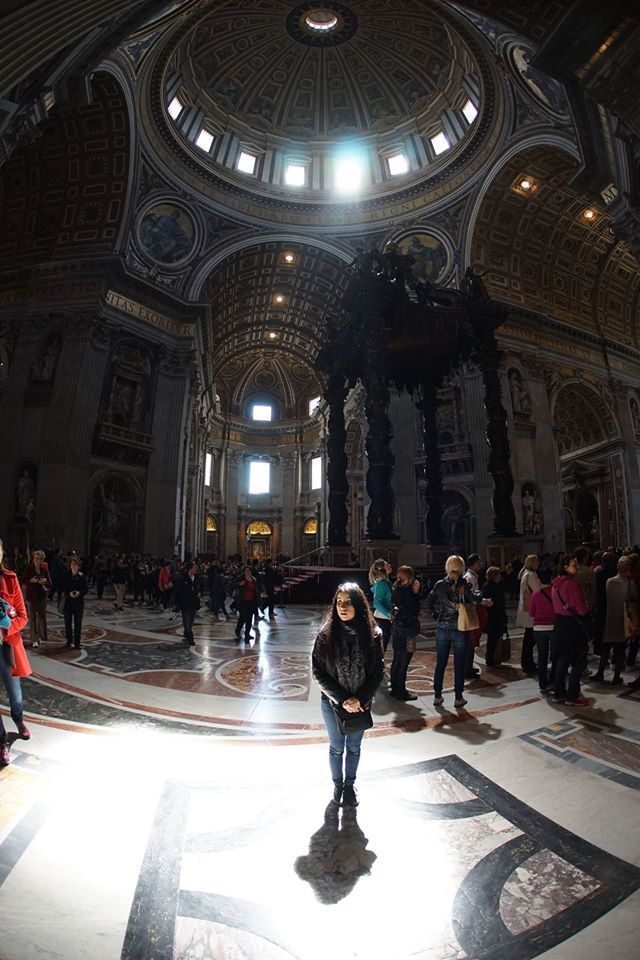 |
|
| Back to top |
|
 |
Gerald


Joined: 25 Mar 2014
Posts: 1196
Location: Brazil
|
 Posted: Thu Feb 25, 2016 1:30 pm Post subject: Posted: Thu Feb 25, 2016 1:30 pm Post subject: |
 |
|
Gerald wrote:
Beautiful photo, dnas! I also think that your photo would gain nothing with defishing, for example
When I opened this topic, my goal was to show that it is possible to shoot landscapes with a fisheye lens. I didn't say that a fisheye is necessarily better for landscape photography than a rectilinear ultra wide-angle lens, or other techniques such as panorama, image stitching, etc.
Tthe fisheye lenses were popularized by the Japanese lens manufacturers. Nikon pioneered with many models, including an extraordinary fisheye lens with angle of view of 220 degrees. Among the German lens manufacturerss, it seems that only Zeiss designed one fish-eye lens for 35mm and another for 6x6. To be more exact, it seems that Jenoptik still produces some fisheye lenses, but they are very expensive and produced in very small numbers.
A list of the most popular fisheye lens designs that have been marketed over the years:
http://panopticus.altervista.org/fishlist/fishlist.htm
_________________
If raindrops were perfect lenses, the rainbow did not exist. |
|
| Back to top |
|
 |
argyle
Joined: 14 Aug 2008
Posts: 10
|
 Posted: Thu Feb 25, 2016 11:07 pm Post subject: Posted: Thu Feb 25, 2016 11:07 pm Post subject: |
 |
|
argyle wrote:
Fisheyes are great for landscape shooting...Horseshoe Bend on the Colorado River in Page, Arizona:
 |
|
| Back to top |
|
 |
Gerald


Joined: 25 Mar 2014
Posts: 1196
Location: Brazil
|
 Posted: Fri Feb 26, 2016 1:33 pm Post subject: Posted: Fri Feb 26, 2016 1:33 pm Post subject: |
 |
|
Gerald wrote:
Wow! What a place! It must be a paradise for landscape photographers!
Congratulations for the photo! It really captured the grandeur of the place. 
I tried to defish the photo, but the result was not so good. It became clear once again that a fisheye can be a better option for some landscapes than a rectilinear ultra wideangle lens. The difference between these lenses is that a fisheye emphasizes the center of the image, while a rectilinear ultra wide-angle lens makes the edges more explicit.
_________________
If raindrops were perfect lenses, the rainbow did not exist. |
|
| Back to top |
|
 |
SonicScot


Joined: 01 Dec 2011
Posts: 2698
Location: Scottish Highlands
|
 Posted: Sun Feb 28, 2016 12:17 pm Post subject: Posted: Sun Feb 28, 2016 12:17 pm Post subject: |
 |
|
SonicScot wrote:
I have shared some of these before but I think it's appropriate to do so again.
Zenitar 16/2.8 fisheye on Canon 5D Mkll. No de-fishing involved.




 Loch Clair by Gary Sutherland, on Flickr Loch Clair by Gary Sutherland, on Flickr
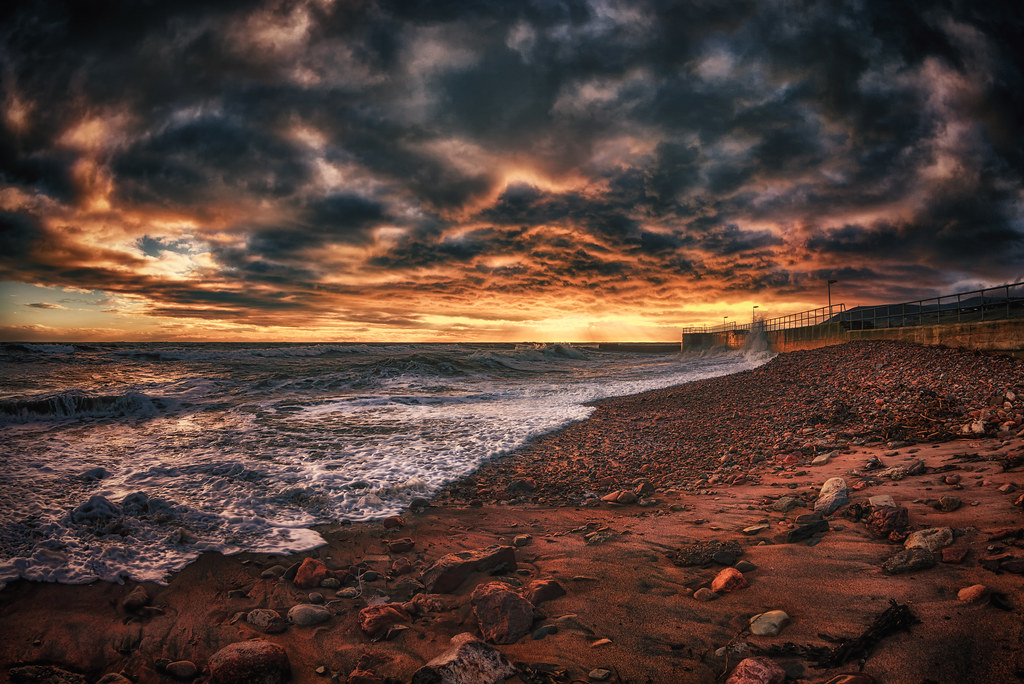 Stormy sunset in Helmsdale. by Gary Sutherland, on Flickr Stormy sunset in Helmsdale. by Gary Sutherland, on Flickr
 Long way down by Gary Sutherland, on Flickr Long way down by Gary Sutherland, on Flickr
_________________
Gary
Currently active gear....
Sony a7
E-M1 Mkll
Rubinar 1000/10 + 2x matched extender
Tamron 500/8 55BB
Sigma 100-300/4
Vivitar Series 1.... 200/3, 70-210/3.5 (V1 by Kiron), 135/2.3, 105/2.5 macro, 90/2.5 macro (Bokina), 90-180/4.5 Flat Field Macro, 28-90mm f/2.8-3.5
Carl Zeiss.... 180/2.8, 135/3.5, 85/1.4, 35/2.4 Flektagon, 21/2.8 Distagon
Nikon.... 55/3.5 micro, 50/1.2
Elicar 90/2.5 V-HQ Macro
Zhongyi Speedmaster 85/1.2
Jupiter-9 85/2
Helios.... 58/2 44-3
Hartblei 45/3.5 Super-Rotator TS-PC
Zenitar 16/2.8 fisheye
Samyang 8/3.5 fisheye
Nodal Ninja 4, Neewer leveling tripod base
Flickr http://www.flickr.com/photos/gazsus/ Website http://garianphotography.co.uk/ |
|
| Back to top |
|
 |
Marek


Joined: 13 Apr 2014
Posts: 903
Location: In the heart of Europe
|
 Posted: Sun Feb 28, 2016 1:00 pm Post subject: Posted: Sun Feb 28, 2016 1:00 pm Post subject: |
 |
|
Marek wrote:
wow 
_________________
Angry young man !
Flickr | Juzaphoto | Ebay sales
marekfiser [at] gmail [dot] com |
|
| Back to top |
|
 |
philslizzy


Joined: 07 Aug 2012
Posts: 4748
Location: Cheshire, England
|
 Posted: Sun Feb 28, 2016 7:10 pm Post subject: Posted: Sun Feb 28, 2016 7:10 pm Post subject: |
 |
|
philslizzy wrote:
Great photos and inspiration. I have had a fisheye converter since the 70's and use it once in a while - yeah the quality's not great but it will give me some ideas.
I'm considering buying a Samyang 8mm to use on my Sony A6000 but there are several version as far as I can see, all at much the same price here are samples of the four varieties I found. Prices differ - naturally I'd go for the best lens at the best price.
So which is best?

_________________
Hero in the 'messin-with-cameras-for-the-hell-of-it department'. Official. |
|
| Back to top |
|
 |
Gerald


Joined: 25 Mar 2014
Posts: 1196
Location: Brazil
|
 Posted: Sun Feb 28, 2016 10:49 pm Post subject: Posted: Sun Feb 28, 2016 10:49 pm Post subject: |
 |
|
Gerald wrote:
| SonicScot wrote: |
I have shared some of these before but I think it's appropriate to do so again.
Zenitar 16/2.8 fisheye on Canon 5D Mkll. No de-fishing involved. |

Great pictures! Wonderful sceneries! Thank you for sharing your photos.
I'm pleasantly surprised to see that shooting landscapes with a fisheye is more popular than I thought.
_________________
If raindrops were perfect lenses, the rainbow did not exist. |
|
| Back to top |
|
 |
Gerald


Joined: 25 Mar 2014
Posts: 1196
Location: Brazil
|
 Posted: Sun Feb 28, 2016 11:06 pm Post subject: Posted: Sun Feb 28, 2016 11:06 pm Post subject: |
 |
|
Gerald wrote:
| philslizzy wrote: |
I'm considering buying a Samyang 8mm to use on my Sony A6000 but there are several version as far as I can see, all at much the same price here are samples of the four varieties I found. Prices differ - naturally I'd go for the best lens at the best price.
So which is best?
 |
The first two lenses are for still photography. The last two are cine-style versions of the first two.
I have no direct experience with these lenses, but it seems clear to me that the Samyang 8mm F2.8 is the best option. It is the fastest and most modern lens. You can decide by yourself by reading the reviews of Lenstip.com.
Samyang 8 mm f/3.5 Aspherical IF MC Fish-eye
http://www.lenstip.com/index.html?test=obiektywu&test_ob=160
Samyang 8 mm f/2.8 UMC Fisheye
http://www.lenstip.com/index.html?test=obiektywu&test_ob=347
_________________
If raindrops were perfect lenses, the rainbow did not exist. |
|
| Back to top |
|
 |
WNG555


Joined: 18 Dec 2014
Posts: 784
Location: Arrid-Zone-A, USA
|
 Posted: Mon Feb 29, 2016 1:41 pm Post subject: Posted: Mon Feb 29, 2016 1:41 pm Post subject: |
 |
|
WNG555 wrote:
Samyang/Rokinon/Bower Fisheyes....
Get the 2nd one. It's for Sony APS-C and a later release. It's a fraction faster, and has all of the technical spec updates. (hence the Fisheye II label)
The f3.5 is based on the older Gold banded model, and is for full-frame. It's been cosmetically updated and coatings revised.
I have the f3.5 for my a6000, and also works very well.
_________________
"The eyes are useless when the mind is blind."
Sony ILCE-6000, SELP1650, SEL1855, SEL55210, SEL5018. Sigma 19/30/60mm f2.8 EX DN Art.
Rokinon 8mm f3.5 Fish-Eye, 14mm f2.8 IF ED UMC. Samyang 12mm f2.8 ED AS NCS Fish-Eye.
And a bunch of Manual-Focus Lenses
My Flickr |
|
| Back to top |
|
 |
philslizzy


Joined: 07 Aug 2012
Posts: 4748
Location: Cheshire, England
|
 Posted: Thu Mar 03, 2016 9:33 am Post subject: Posted: Thu Mar 03, 2016 9:33 am Post subject: |
 |
|
philslizzy wrote:
Thank you both for your opposing views. I looked at the reviews and was amazed at the size difference. The f2.8 is half the size of the 3.5, and has half stops. The difference is everything else is minimal.
I'll go for the f2.8
_________________
Hero in the 'messin-with-cameras-for-the-hell-of-it department'. Official. |
|
| Back to top |
|
 |
invisible

Joined: 06 Jun 2013
Posts: 343
|
 Posted: Thu Mar 03, 2016 11:18 am Post subject: Posted: Thu Mar 03, 2016 11:18 am Post subject: |
 |
|
invisible wrote:
| WNG555 wrote: |
The f3.5 is based on the older Gold banded model, and is for full-frame. It's been cosmetically updated and coatings revised.
I have the f3.5 for my a6000, and also works very well. |
I was under the impression that a full-frame fisheye lens used on a cropped-sensor camera (which I believe the a6000 is) did not really give true fisheye results. Can you post photos taken with that combo? |
|
| Back to top |
|
 |
Gerald


Joined: 25 Mar 2014
Posts: 1196
Location: Brazil
|
 Posted: Thu Mar 03, 2016 1:53 pm Post subject: Posted: Thu Mar 03, 2016 1:53 pm Post subject: |
 |
|
Gerald wrote:
| philslizzy wrote: |
Thank you both for your opposing views. I looked at the reviews and was amazed at the size difference. The f2.8 is half the size of the 3.5, and has half stops. The difference is everything else is minimal.
I'll go for the f2.8 |
The Samyang 8mm F3.5 has large back focal length so it can be used with DSLR cameras. The F2.8 version, which has smaller back focal length, can be used only on mirrorless cameras.
The Samyang 8mm F3.5 can be used on APS-C or FF cameras:
"It is a “full frame” diagonal fisheye lens for APS-C DSLRs, meaning that the image it produces fills the frame on APS-C cameras. It produces an immense field of view - 180 degrees on 1.5x crop sensors, or on 1.6x crop sensors such as Canon EOS APS-C DSLRs produces 167 degrees.
On Full frame cameras, it produces a vignetted image, which is almost circular with the lens hood detached. This effect is required for user wanting the biggest image / field of view for panoramic software on full frame cameras, and one of the reasons Samyang produced this removable lens hood version."
from: http://www.samyang-lens.co.uk/samyang-8mm-f35-fisheye-csii-dh-lens.html
In principle, the Samyang 8mm the F2.8 is intended to be used ONLY on APS-C mirrorless cameras because the fixed lens hood produces vignetting on a FF camera. However, there are some intrepid guys out there that surgically removed the lens hood… 
_________________
If raindrops were perfect lenses, the rainbow did not exist. |
|
| Back to top |
|
 |
WNG555


Joined: 18 Dec 2014
Posts: 784
Location: Arrid-Zone-A, USA
|
 Posted: Fri Mar 04, 2016 3:06 am Post subject: Posted: Fri Mar 04, 2016 3:06 am Post subject: |
 |
|
WNG555 wrote:
| invisible wrote: |
| WNG555 wrote: |
The f3.5 is based on the older Gold banded model, and is for full-frame. It's been cosmetically updated and coatings revised.
I have the f3.5 for my a6000, and also works very well. |
I was under the impression that a full-frame fisheye lens used on a cropped-sensor camera (which I believe the a6000 is) did not really give true fisheye results. Can you post photos taken with that combo? |
Gerald has responded above as to the results on APS-C. On my a6000, I get full coverage of the sensor.
 DSC02997 by wNG 555, on Flickr DSC02997 by wNG 555, on Flickr
 DSC02992 by wNG 555, on Flickr DSC02992 by wNG 555, on Flickr
 DSC07397 - Rokinon 8mm f3.5 by wNG 555, on Flickr DSC07397 - Rokinon 8mm f3.5 by wNG 555, on Flickr
 DSC07395 - Rokinon 8mm f3.5 by wNG 555, on Flickr DSC07395 - Rokinon 8mm f3.5 by wNG 555, on Flickr
 DSC07280a by wNG 555, on Flickr DSC07280a by wNG 555, on Flickr
This is a cropped and processed result from the fisheye...no defishing, as I wanted it in the composition.
 DSC07282d by wNG 555, on Flickr DSC07282d by wNG 555, on Flickr
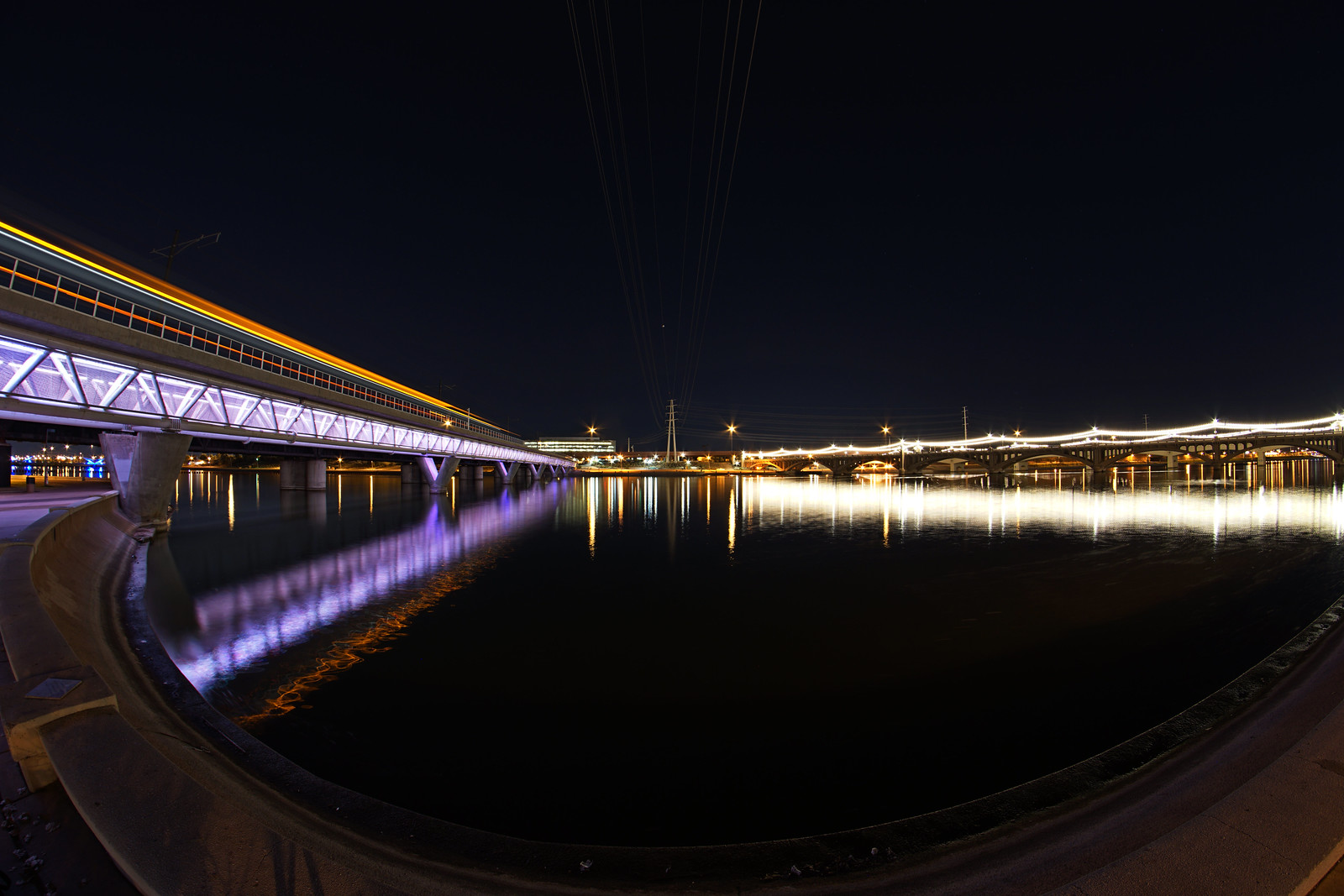 DSC02528 by wNG 555, on Flickr DSC02528 by wNG 555, on Flickr
_________________
"The eyes are useless when the mind is blind."
Sony ILCE-6000, SELP1650, SEL1855, SEL55210, SEL5018. Sigma 19/30/60mm f2.8 EX DN Art.
Rokinon 8mm f3.5 Fish-Eye, 14mm f2.8 IF ED UMC. Samyang 12mm f2.8 ED AS NCS Fish-Eye.
And a bunch of Manual-Focus Lenses
My Flickr |
|
| Back to top |
|
 |
WNG555


Joined: 18 Dec 2014
Posts: 784
Location: Arrid-Zone-A, USA
|
 Posted: Sun Mar 06, 2016 2:52 am Post subject: Posted: Sun Mar 06, 2016 2:52 am Post subject: |
 |
|
WNG555 wrote:

BTW, SonicScot, those are beautiful landscapes!
Glad you posted them again, I didn't see them the first time.
_________________
"The eyes are useless when the mind is blind."
Sony ILCE-6000, SELP1650, SEL1855, SEL55210, SEL5018. Sigma 19/30/60mm f2.8 EX DN Art.
Rokinon 8mm f3.5 Fish-Eye, 14mm f2.8 IF ED UMC. Samyang 12mm f2.8 ED AS NCS Fish-Eye.
And a bunch of Manual-Focus Lenses
My Flickr |
|
| Back to top |
|
 |
Abbazz


Joined: 23 Jun 2007
Posts: 1098
Location: Jakarta
|
 Posted: Sun Mar 06, 2016 3:26 am Post subject: Posted: Sun Mar 06, 2016 3:26 am Post subject: |
 |
|
Abbazz wrote:
Thanks for the thread, Gerald, and thanks to all who have posted beautiful fisheye landscape pictures.
I always try to include a fisheye in my photo bag when going out to shoot landscape or cityscape pictures. Here are a few pictures from yesterday (Sigma 15/2.8 on Sony A7):
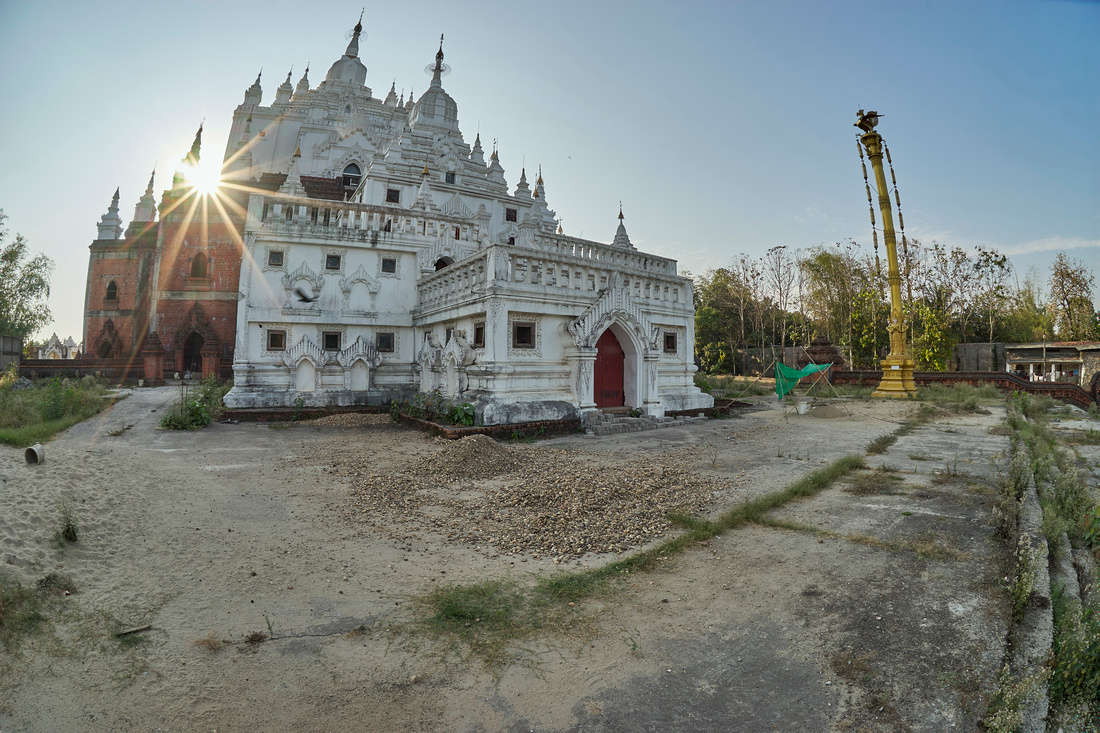
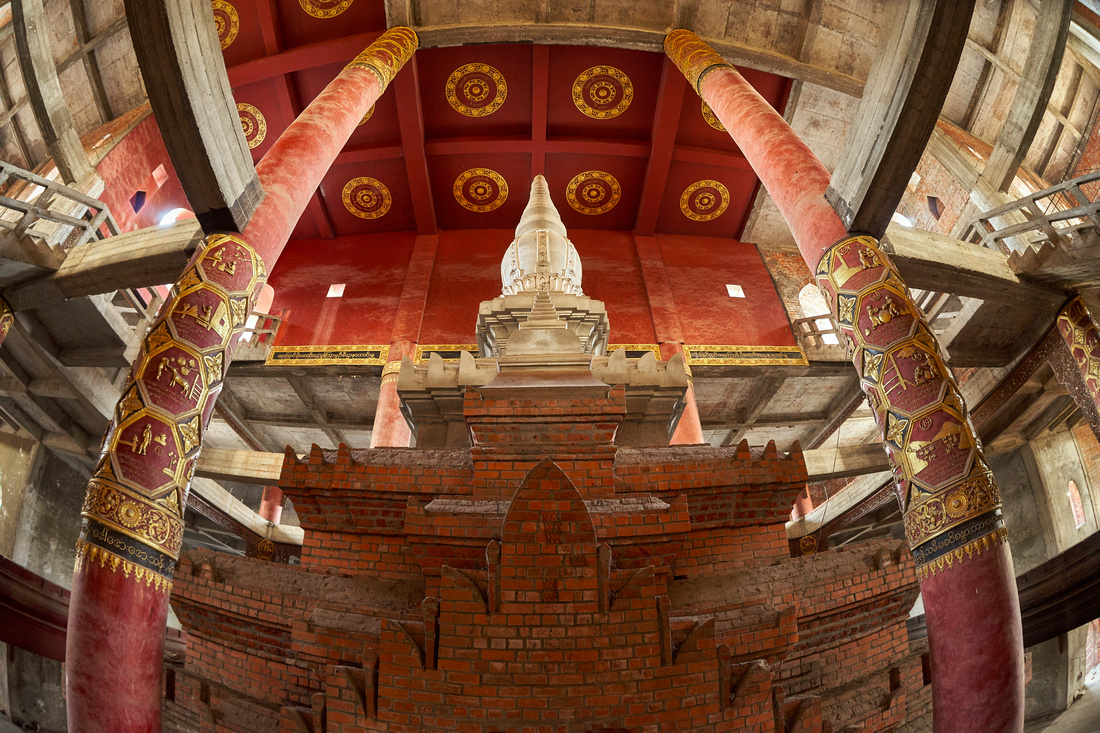
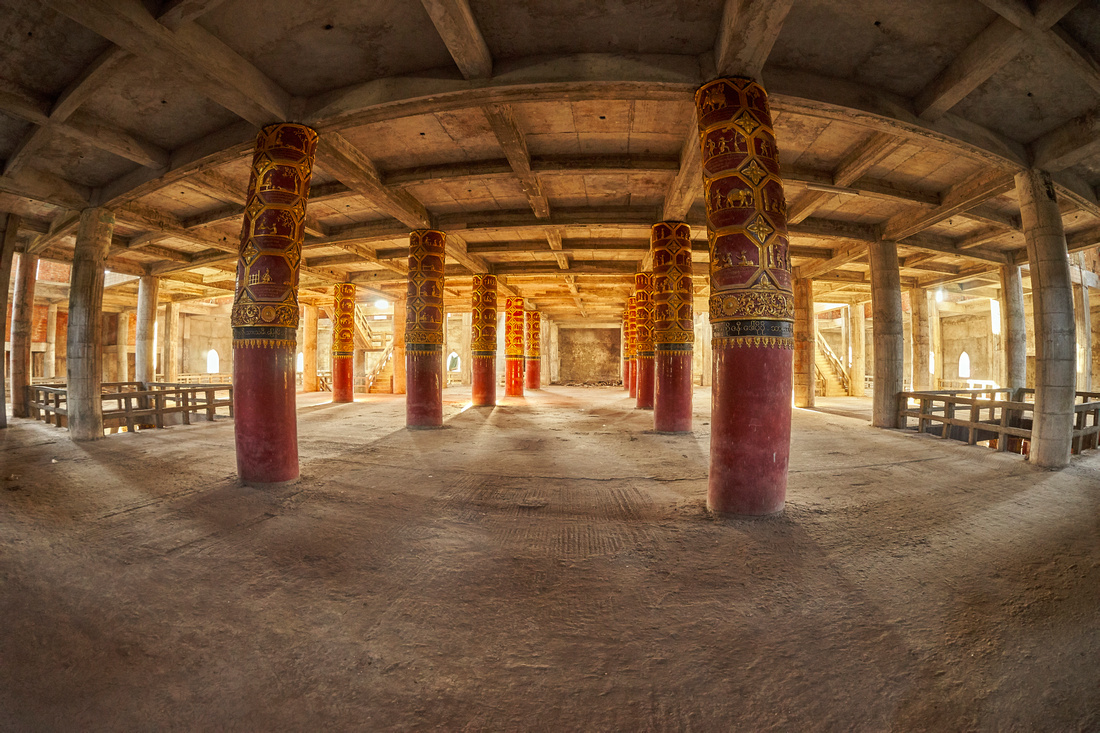
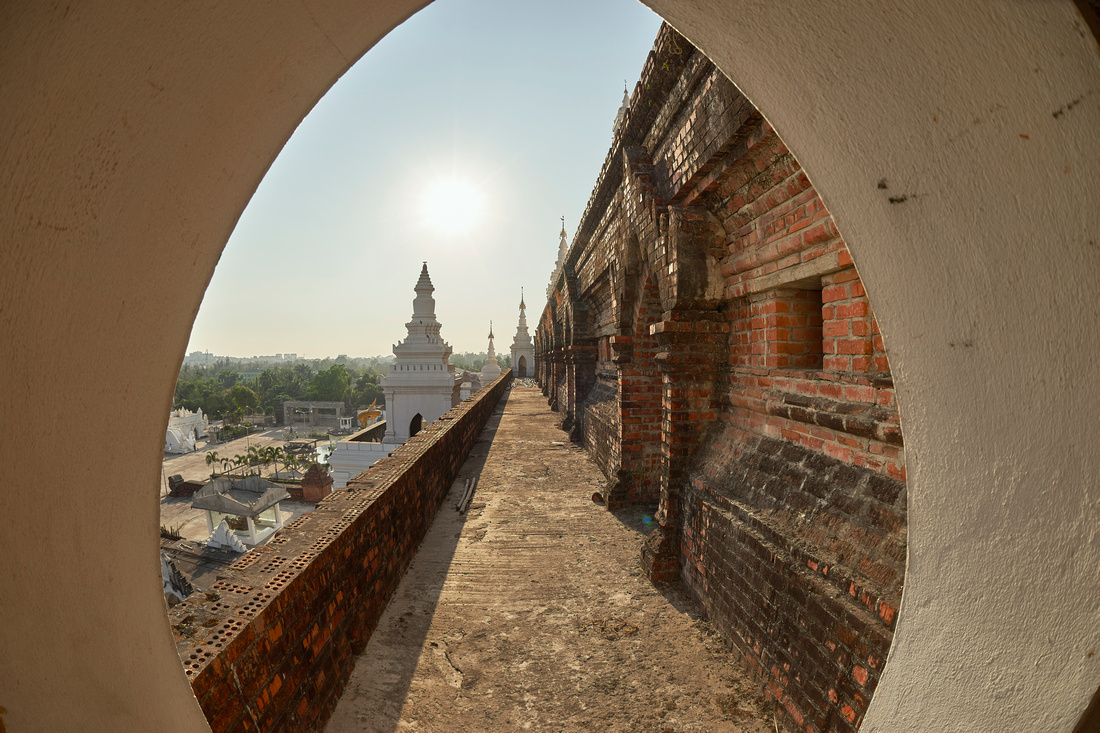
Cheers!
Abbazz
_________________
Il n'y a rien dans le monde qui n'ait son moment decisif, et le chef-d'oeuvre de la bonne conduite est de connaitre et de prendre ce moment. - Cardinal de Retz
The 6x9 Photography Online Resource:
http://artbig.com/ |
|
| Back to top |
|
 |
WNG555


Joined: 18 Dec 2014
Posts: 784
Location: Arrid-Zone-A, USA
|
 Posted: Mon Mar 07, 2016 6:52 am Post subject: Posted: Mon Mar 07, 2016 6:52 am Post subject: |
 |
|
WNG555 wrote:
^^ What a beautiful location, Abbazz!
_________________
"The eyes are useless when the mind is blind."
Sony ILCE-6000, SELP1650, SEL1855, SEL55210, SEL5018. Sigma 19/30/60mm f2.8 EX DN Art.
Rokinon 8mm f3.5 Fish-Eye, 14mm f2.8 IF ED UMC. Samyang 12mm f2.8 ED AS NCS Fish-Eye.
And a bunch of Manual-Focus Lenses
My Flickr |
|
| Back to top |
|
 |
Abbazz


Joined: 23 Jun 2007
Posts: 1098
Location: Jakarta
|
 Posted: Mon Mar 07, 2016 2:53 pm Post subject: Posted: Mon Mar 07, 2016 2:53 pm Post subject: |
 |
|
Abbazz wrote:
| WNG555 wrote: |
| ^^ What a beautiful location, Abbazz! |
Thank you, WNG555!
The Yellowstone is not a bad location either... 
The pictures I posted yesterday were taken at a strange site: it's an unfinished pagoda in the suburbs of Yangon, a huge modern building that gives the impression of having been left to rot before even having been fully built...
A few more pictures:



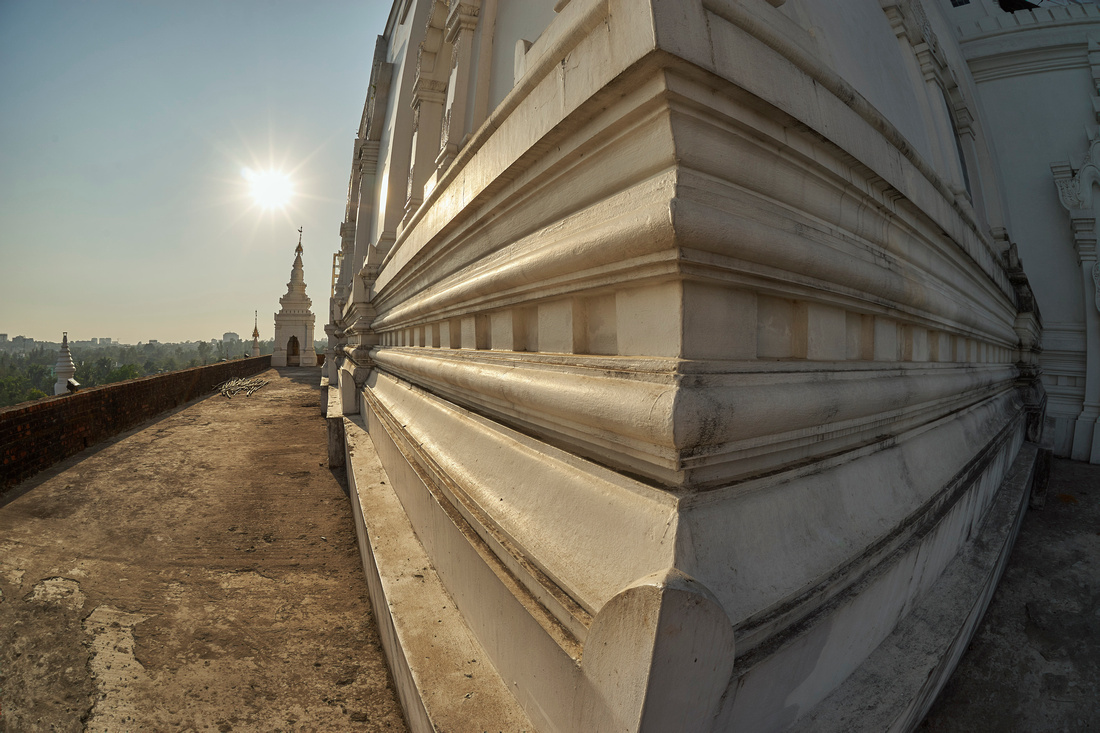
Cheers!
Abbazz
_________________
Il n'y a rien dans le monde qui n'ait son moment decisif, et le chef-d'oeuvre de la bonne conduite est de connaitre et de prendre ce moment. - Cardinal de Retz
The 6x9 Photography Online Resource:
http://artbig.com/ |
|
| Back to top |
|
 |
Gerald


Joined: 25 Mar 2014
Posts: 1196
Location: Brazil
|
 Posted: Mon Mar 07, 2016 7:57 pm Post subject: Posted: Mon Mar 07, 2016 7:57 pm Post subject: |
 |
|
Gerald wrote:
WNG555 and Abbazz,
Thank you for sharing your nice pictures. 
To have the opportunity of photographing places so interesting is a real privilege.
I would like to comment on a technical aspect of fisheye lenses that could create a doubt in the minds of those who are thinking of buying this type of lens. I refer to the focal length. For the so-called "full-frame", fisheyes, i.e., those that completely fill the picture frame, the "normal" focal lengths for the most common formats are as follows:
35mm: 15, 16 and 17mm
APS-C: 10.5mm
M43: 8mm
The focal lengths adopted by Samyang could create some confusion, though. Curiously, Samyang opted to use 12mm for 35mm format, and 8mm for APS-C. As a consequence, Samyang's fisheyes give a curvilinear perspective which is somewhat different from most other lens of the same type. Compared to other fisheyes, the image produced by a Samyang is more compressed in the center, but less at the edges. You may also say that the Samyang "distorts" less than other fisheyes. In a sense, a Samyang fisheye is an intermediary between a traditional fisheye and a rectilinear ultra wide angle lens.
_________________
If raindrops were perfect lenses, the rainbow did not exist. |
|
| Back to top |
|
 |
philslizzy


Joined: 07 Aug 2012
Posts: 4748
Location: Cheshire, England
|
 Posted: Tue Mar 08, 2016 9:42 am Post subject: Posted: Tue Mar 08, 2016 9:42 am Post subject: |
 |
|
philslizzy wrote:
| invisible wrote: |
| WNG555 wrote: |
The f3.5 is based on the older Gold banded model, and is for full-frame. It's been cosmetically updated and coatings revised.
I have the f3.5 for my a6000, and also works very well. |
I was under the impression that a full-frame fisheye lens used on a cropped-sensor camera (which I believe the a6000 is) did not really give true fisheye results. Can you post photos taken with that combo? |
'Full frame fisheye' in this case means the image covers the full frame rather than a circular image within it. The Samyang f2.8 are designed for the APS sensor. So I would get a true 8mm (equal to 12mm on full frame cameras)
_________________
Hero in the 'messin-with-cameras-for-the-hell-of-it department'. Official. |
|
| Back to top |
|
 |
Gerald


Joined: 25 Mar 2014
Posts: 1196
Location: Brazil
|
 Posted: Tue Mar 08, 2016 12:38 pm Post subject: Posted: Tue Mar 08, 2016 12:38 pm Post subject: |
 |
|
Gerald wrote:
| philslizzy wrote: |
'Full frame fisheye' in this case means the image covers the full frame rather than a circular image within it. The Samyang f2.8 are designed for the APS sensor. So I would get a true 8mm (equal to 12mm on full frame cameras) |
I don't know what you meant by "true" 8mm, but perhaps the two pictures below be useful to show the difference between the Samyang 8mm F3.5 and a "circular" fisheye like the Nikkor 8mm F2.8. The images were obtained with FF cameras. A green rectangle was drawn on the first image to show what would be the field captured by an APS-C sensor. Note how the diameter of Samyang's image circle is greater than Nikkor's.
Samyang 8mm F3.5 on FF camera (the green rectangle shows the field of an APS-C sensor):

(from: https://www.ephotozine.com/article/samyang-8mm-f-3-5-umc-fish-eye-cs-ii-lens-review-26623)
Nikkor 8mm F2.8 on FF camera:

(from: http://www.kenrockwell.com/nikon/8mm.htm)
_________________
If raindrops were perfect lenses, the rainbow did not exist. |
|
| Back to top |
|
 |
SonicScot


Joined: 01 Dec 2011
Posts: 2698
Location: Scottish Highlands
|
 Posted: Wed Mar 09, 2016 1:30 am Post subject: Posted: Wed Mar 09, 2016 1:30 am Post subject: |
 |
|
SonicScot wrote:
| WNG555 wrote: |

BTW, SonicScot, those are beautiful landscapes!
Glad you posted them again, I didn't see them the first time. |
Thank you 
_________________
Gary
Currently active gear....
Sony a7
E-M1 Mkll
Rubinar 1000/10 + 2x matched extender
Tamron 500/8 55BB
Sigma 100-300/4
Vivitar Series 1.... 200/3, 70-210/3.5 (V1 by Kiron), 135/2.3, 105/2.5 macro, 90/2.5 macro (Bokina), 90-180/4.5 Flat Field Macro, 28-90mm f/2.8-3.5
Carl Zeiss.... 180/2.8, 135/3.5, 85/1.4, 35/2.4 Flektagon, 21/2.8 Distagon
Nikon.... 55/3.5 micro, 50/1.2
Elicar 90/2.5 V-HQ Macro
Zhongyi Speedmaster 85/1.2
Jupiter-9 85/2
Helios.... 58/2 44-3
Hartblei 45/3.5 Super-Rotator TS-PC
Zenitar 16/2.8 fisheye
Samyang 8/3.5 fisheye
Nodal Ninja 4, Neewer leveling tripod base
Flickr http://www.flickr.com/photos/gazsus/ Website http://garianphotography.co.uk/ |
|
| Back to top |
|
 |
|
|
